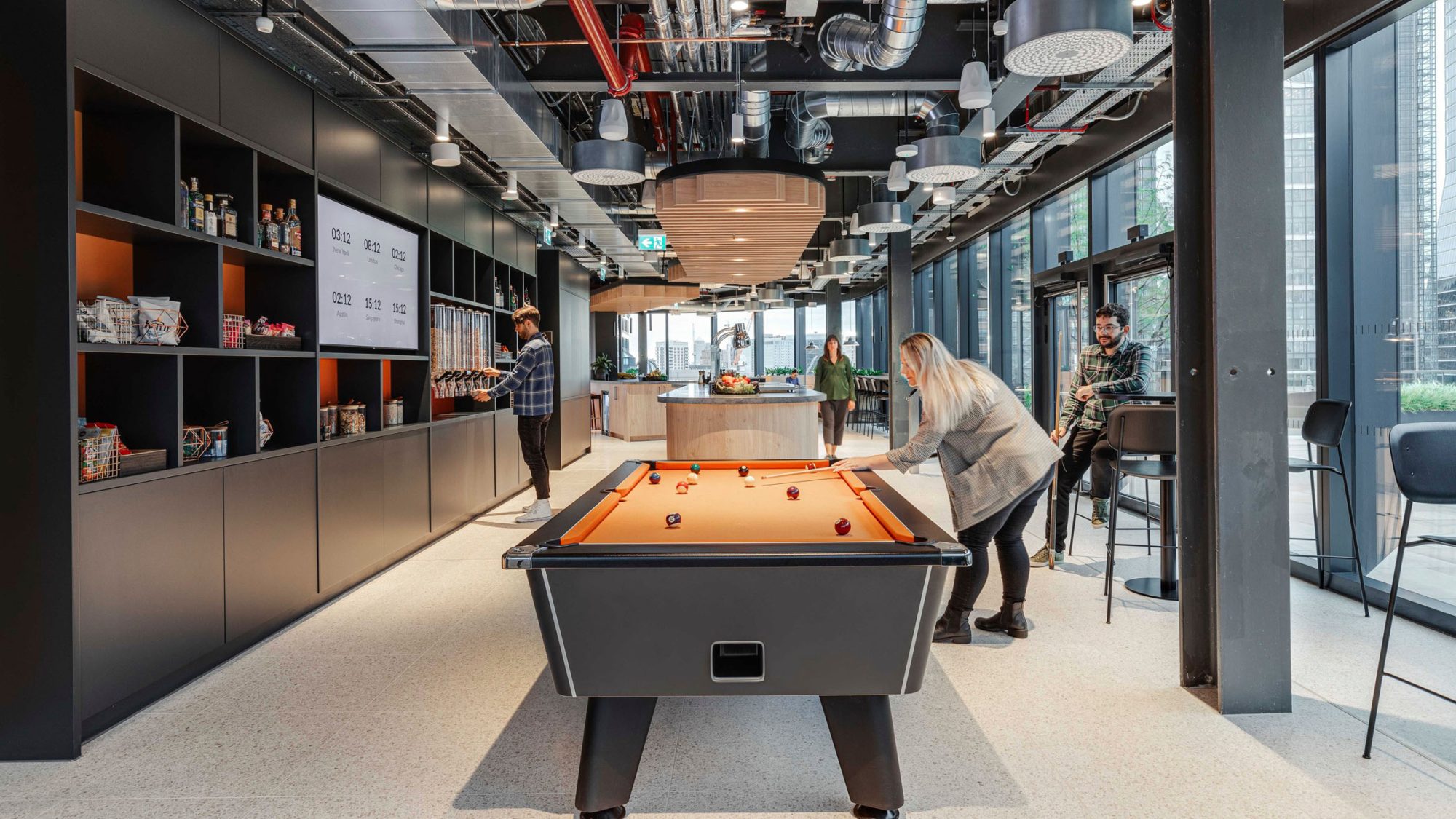










In this video, we sit down with Senior Associate Raquel Machado to discuss ‘creating a space for the next generation’.
We explore the importance of health & wellness, work/life balance and neurodiversity in the workplace.
As designers, it is our responsibility to create a space that not only meets employees needs but also inspires them to grow and thrive.
Raquel Machado, Senior Associate, DesignOne of the most significant changes that we see in the workplace is the shift towards wellness. Increasingly, younger generations are more aware of their mental and physical health. As such, it is critical to design workplaces that provide access to gyms, outdoor space and healthy food options.
Neurodiversity is also essential to consider. We must create a variety of areas that cater to different people’s needs, such as quiet spaces for concentration. Furthermore, offering parent and multi-functional rooms helps support personal needs.
The workplace should be a place to work and to socialise. Social spaces such as cafés, lounges, and game rooms allow employees to recharge and build relationships with their colleagues. Designing these spaces with hospitality in mind ensures people feel welcomed and comfortable.
Workplace technology provides us with insights into how people interact with spaces. By leveraging data and analytics, we can better understand what employees need and how we can improve their experience.
There is no one-size-fits-all solution to creating a space for the next generation. Workplace strategy helps us discover what motivates people and what they need. By creating adaptable spaces that consider employee needs, we can foster a sense of community and culture where people can thrive.
Creating a space for the next generation requires an integrated approach that considers work needs and overall wellbeing. By incorporating wellness, neurodiversity and social spaces, we can create a workplace that supports and inspires employees to do their best work. The workplace is not just a physical space; it is a community. It’s our responsibility to create a space that fosters growth, learning, and connection.
Understanding employee needs and values is crucial to creating spaces for the next generation. Incorporating wellness and a variety of hospitality-inspired settings enhances the employee experience. To support inclusivity, workplaces must be designed for different work preferences and styles. Establishing social spaces is also vital to creating a sense of community and culture. Overall, continuous learnings from workplace technology will enable us to adapt and improve the workspace to meet the changing needs of employees.
Associate Director